As all eyes turn to Hawaii and Guatemala in observance of the volcanic eruptions, many people don’t realize that volcanoes can have an impact thousands of miles away.
To add insult to injury, there are places, such as the caldera beneath Yellowstone National Park that can lead to even larger and more deadly volcanic eruptions. While getting away from an erupting volcano isn’t necessarily different from getting away from any other geological disaster, the kinds of gear that you need to stay safe while in the situation may not already be in your bug out bag. In fact, some of the most important items may be further down on your list because you don’t know enough about them, or they are a bit more expensive items or models that will work well enough in other situations. Now it is a good time to think about how you will survive a volcanic eruption, or the fallout from one like Hawaii that may reach well into the west coast of the United States.
Danger Is Not Confined To Limited Areas
Many people don’t realize that the ultra-fine nature of volcanic ash means that it can travel for hundreds to thousands of miles fairly quickly. As a result, the volcanic eruptions in Hawaii can easily affect air quality well beyond that state. If the winds are right, the ash can spread as far as the Western border of the Americas or the Eastern borders of Asia and Africa.
Even though hurricanes and tornadoes can wreak havoc across dozens to hundreds of miles with some degree of predictability, there is no way to tell for sure how far the geological damage will go from volcanoes. Consider what is going on in Hawaii right now. Just a few weeks ago, everyone was hoping that the lava flow would stop at the geothermal plant. Today, June 8th, there is news that the lava flow from the volcano is enough to bury an area the size of Manhattan over 6 feet deep.
How To Build a Small Bunker in Your Backyard with $400
While researchers say Earth is small when compared to other planets, the fact is it is still much larger than human beings and can easily crush all of our most complex and durable workings in a matter of seconds. In addition, there are very few, if any researchers interested in studying how earth motions create sound resonances that can pose serious risk as they travel through unknown terrain below ground. Consider the way glass shatters when the right pitch is struck by a singer, or how the energy of sound waves is magnified exponentially under water.
We have neither the knowledge, the power, nor the tools to accurately predict how much destruction the Kilauea volcano will cause, let alone the newer eruption in Guatemala. This includes lack of an accurate understanding of how these eruptions impact multiple oceanic and continental plate systems and how this is all changing within the context of melting glaciers, alterations to the rotation of the Earth on its axis, and man-made changes to the Earth.
Most people know that an eruption in an area like Yellowstone would be catastrophic within days to months of the eruption starting. It would not surprise me if the simultaneous eruption of smaller volcanoes might pose just as much hazard from vog, volcanic ash spread, and the development of geological instabilities. Don’t forget the wastewater from fracking has seriously increased earthquakes in some areas. When combined with the differences in density between the materials extracted from the ground, when compared to materials re-injected, it would not surprise me if these volcanoes and earthquakes will create far more damaging sound resonances than we can comprehend on top of everything else.
To my thinking on the matter, researchers may never “connect the dots” between these eruptions and major catastrophic earth changes in the coming months and years, however that does not mean we haven’t already sealed our own fate and need to prepare for volcano related problems as quickly as possible.
Understanding Why Ash Is So Dangerous
There are two main reasons why volcanic ash is very dangerous to human health and to anything else living in the area. First, volcanic ash is usually made up of very sharp, fine particles. Even though they may not seem very big, their sharpness is enough to slice right through the delicate coverings of the alveoli in your lungs. Since those membranes must remain thin and free of scarring in order to permit gaseous exchange, the cuts from volcanic ash can easily lead to suffocation. Larger particles that do not reach the alveoli can also cause considerable damage in terms of coating airways and cutting into the inner linings of the airways.
Volcanic ash can also be very acidic or carry other toxic chemicals that can burn your skin and eyes. It is very important to realize that the acids and other chemicals don’t magically disappear or become neutralized just because the fall on something other than your body. For example, if they fall on food, utensils, or anything else that is edible, you will need to wash those things off carefully before eating them. Since the acids in volcanic ash can burn through plant matter, it is very important to examine leaves and other plant parts carefully before consuming them. Even though water can dilute acids, that doesn’t mean the water will be safe to drink if it has volcanic ash in it.
Other chemicals in the ash can still cause lethal effects once dissolved in the water. Needless to say, volcanic ash can easily poison game animals, and also make wild plants useless in terms of possible food sources.
Managing Toxic Gases
Unless you are in the area of an active eruption, you will not need to be concerned with lava flows, steam vents, or other explosive aspects of a volcanic eruption. As simple as it may seem, if you are near an erupting volcano, you need to evacuate as quickly as possible to avoid falling lava and sudden opening of fissures and seams. While emergency control and news resources say it is not necessary to evacuate if there are heavy earthquakes or lava not predicted to flow in the area, never forget that we are living in geologically unstable times. Just because the known and “approved” recorded past volcanoes and associated earthquakes did not lead to catastrophic large scale disaster, that doesn’t mean these times will be the same. This is especially true of areas like Yellowstone and other locations were unusually large pockets of magma are closer to the surface and under pressure to erupt.
Regardless of whether you are in the eruption zone or several miles away, it is very important to be prepared for managing toxic gases and volcanic ash. Here are the basic things you need to do even if you think you are safe from ash clouds and debris:
- Start off by gaining access to a good quality weather service. Pay careful attention to storm and wind patterns. If the winds are travelling from an area of an active eruption, the ash and toxic gases can spread for hundreds to thousands of miles. Even though they will dilute along the way, that doesn’t mean they won’t cause problems once they arrive. Doing your own research on the weather patterns can give you a chance to minimize contact with volcanic ash and gases that “experts” may deem to be acceptably safe levels. Remember, we live in a world where our lungs, immune, and other body systems are already heavily taxed by all kinds of pollutants and poisons. Many people also have compromised lungs and other conditions that would make even a small amount of exposure to volcanic ash and gases more dangerous than expected. In the end, it is up to you to protect yourself and do what you can to limit exposure to toxic gases from volcanic eruptions as much as possible. Unfortunately, you cannot prepare yourself or limit exposure to something that you aren’t sure is present or not.
- In order to avoid toxic gases, you will need a completely closed off area to live in, and the means to oxygenate and purify the air in that area. A panic room is an ideal location for installing this kind of system. Unless you have a fairly large budget or are building a homestead from scratch, chances are you will not be able to seal off your entire home. It is also not practical to try and use your car or vehicle as a safe place because even fumes from the exhaust easily leak into the vehicle at the best of times. There is no way to make your vehicle safe enough so that you could live in it and still breathe the air inside without using a respirator.
- It is also very important to have a good quality respirator on-hand with fresh filtering cartridges. If you are looking for a good way to oxygenate a panic room, look to living plants and machinery that generates oxygen. Remember, oxygen concentrators used for medical needs do not actually produce oxygen. Instead, they only take oxygen out of the air, and strip away other molecules so that more oxygen reaches the patient. If there is no oxygen or very little oxygen in the room, they will not produce more or make the room safe for habitation from an oxygen level perspective.
Suitable Breathing Gear
The best breathing gear for managing a volcanic eruption will have three parts:
- An airtight, waterproof, leak proof cover. Unless you are using oxygen tanks in conjunction with the respirator, no outside air should reach your nose or mouth without first going through the filter. Since moisture from your breathing can build up in the mask, the cover should have some kind of valve that you can open up on occasion to let the moisture out. While you may breathe in small amount of debris and gasses during this process, it is better than risking a skin infection or other problems created by excessive moisture build up. Depending on the quality of the cover, you may also find ones that have some filtration in and around the vent so that you can reduce exposure to toxins while letting the moisture escape.
- Means to filter out particulate matter such as ash and other debris. At a minimum, the particle filtration material should have an N-95 rating. If you are making your own filter from other materials, use a furnace filter that has at least a Merv-13 rating or equivalent. Merv 16 and up is better because the higher the Merv rating, the more particles it will actually trap. Just remember to have several clean filters cut and ready to install since higher rated filters will also clog up faster. You can, and should use a series of pre-filters to trap larger particles in the outer layers of the mask.
- Means to filter out gases. In most cases, activated carbon will filter out everything from sulphur dioxide to other common toxic gases produced by a volcanic eruption. As with any other filter system, the more carbon surface area you have, the longer the mask will work properly. You may also want to do some research on resins and other composite materials that can be used to filter out other gases that aren’t absorbed by activated carbon. As with the mechanical filtration part of the filter, you should be prepared to quickly and easily replace this part of the filter.
As a means to protect your lungs in a dire emergency, use a bandanna soaked in water and wrung out. While this not keep out all of the dust, it will keep out the larger particles, and hopefully some of the smaller ones. It all depends on what sticks to the moistened fabric. Remember, this emergency mask cannot and will not protect you from breathing in toxic gasses. Still, it is better than nothing.
Protecting Your Skin
As previously noted, the biggest concern you will have when it comes to volcanic eruptions is dealing with volcanic ash. Since the acids and other chemicals in the ash can easily damage your skin, it is very important to cover as much of your skin as possible with suitable material. NBC suits are your best option in terms of relatively lightweight materials, durability, and protection against a wide range of chemicals. You will need to do some research on material and suit types, as some may protect against some acids, but not the ones that may be carried along with volcanic ash. If an NBC suit is out of your budget, you can try looking to Neoprene or other chemical resistant tarps. You can make a suitable covering from this material.
This may also be helpful for making custom fit covers for pets, children, and various items that would be damaged by coming into contact with volcanic ash. Be careful in how you design your pattern as well as how you sew or join the pieces together. Chemical resistant tarps are also useful if you cannot afford to seal off a panic room. Even a much smaller shelter combined with oxygen tanks and suitable breathing gear may be enough to get you through a few days until help arrives, or, if built correctly, act as a mini shelter for the passenger cabin of your vehicle.
If you have nothing else available, and it is an extreme emergency, do not go outside without at least some kind of total body covering. As a very last resort that may or may not work, you can try multiple layers of cut up contractor bags and use duct tape to fashion a coverall. Do not forget to seal off the sleeves and ankles with rubber bands or something else that will keep the bags from slipping and exposing your skin in these areas. Always keep rubber gloves on-hand so that you can protect your hands as much as possible.
Communicating Without Electricity
Unless you stayed behind in an evacuation zone, or the area got hit faster than expected during a volcanic eruption (not so different from Guatemala), it is likely that you will still have electricity, cellular phone service, and access to both televised and radio based emergency broadcasts. Nevertheless, it never hurts to be prepared and ensure that you can send out distress signals and receive information from areas beyond the eruption zone. Here are some things you should have on-hand:
- Bullroarer – this Australian device is spun in order to create a noise that can be heard for miles around. Since volcanic ash and plumes will block out light and reduce visibility, do not count on anyone being able to see a smoke signal or light reflected from a mirror. You will need to use sound, and preferably something that will be heard at a substantial distance. Remember, once the plumes and ash become too dense, planes and helicopters may not be able to fly in. At most, if there are access roads available, someone may be able to get in if they know where you are. It should be noted that Morse Code is quickly becoming a lost art. Nevertheless, if you do keep a bullroarer on hand, you should know how to signal something similar to SOS, and some kind of universal code for directions and locators. Considering the loss and lack of this vital skill, you can hope, but do not expect emergency responders to try and communicate via this method. At most, you can get some kind of repeating (hence man-made) signal out that will be interpreted as a human in need of help.
- In order to get information in, you will need at least some kind of radio that does not operate using electricity. Hand crank radios are good items to keep on-hand, especially if they include emergency broadcast and weather bands. Alternatively, if you are as interested in DIY and building different things out of junk materials, consider building your own foxhole radios, or other designs that do not require batteries. As an added bonus, these radios will also function during an EMP, which means, depending on what you use to build them, they are the most hardened for a wide range of emergencies.
- Finally, it would be a good thing to get some kind of voice signal out that can be picked up by emergency crews. You can go with mini-transmitters based on solid state technology. While pure spark gap generators are illegal, there may be variations that you can build that can be combined with Morse code.
Managing Pets and Livestock
While it may seem like common sense to some, others don’t realize that an animal’s lungs, skin, and sensory organs are just as susceptible to damage from volcanic ash and toxic gases. As you acquire respirators and body coverings for yourself, it is important to do the same for animals in your care. It is also very important to make sure your pets are accustomed to wearing this kind of gear so that they don’t panic in a situation where they need to wear it. Until you have tried to get a cat to wear even a simple leash or a sweater, you will never appreciate just how much time and patience it takes to get some animals to wear garments. Quite frankly, I could write a whole article and beyond on how to get cats and dogs to wear certain kinds of gear!
As with humans, pets and livestock also require food and water that is free from volcanic ash and toxic gases. If you are bugging in, then make sure water and food are kept in an area where ash will not fall into them. Do not forget to wipe off paws, hooves, fur, and feathers after being exposed to volcanic ash. This will cut down on internal exposure to volcanic ash as the animal grooms itself.
How To Protect Your Vehicle
When driving through volcanic ash, it is very important to realize that those tiny particles can easily destroy just about every part of the engine. No matter whether the particles get into the alternator, starter, transmission, or even into the engine block, they will increase the amount of friction on moving parts and cause extensive wear. To add insult to injury, surfaces that must be perfectly smooth can become pitted and abraded to the point where parts break or are no longer able to do their intended job. Here are some things you should have onhand and things to be mindful of:
- Have enough motor oil on-hand so that you can change it every 50 miles. While you can travel approximately 500 to 1000 miles in light volcanic ash, you never know when you will have to travel through denser patches. Of all the damage from volcanic ash, its ability to get into the motor oil is one of the worst. Once the ash builds up in sufficient quantity, the engine of your vehicle will seize up and make it impossible to use for transport.
- Chassis lubricants – consult your vehicle’s manual to find out what kinds of grease or other lubricants are needed, as well as how to access each area. Needless to say, you should also have a jack and the necessary skills to lube the chassis. If you are driving through a lot of volcanic ash, you will need to lube the chassis each time you do an oil change.
- Install and have extra truck grade air filters available. You must also pay careful attention to air filter clogging. Do not wait for the vehicle to stall out or run rough before cleaning the old filter or installing a new one.
- Compressed air – you will need this for cleaning out the air filter, and also removing as much debris as possible from the alternator, starter, and other motors.
- Do not forget that the acidic nature of volcanic ash can also wreak havoc the frame, paint, and outer shell of the vehicle. It can also destroy rubber seals and tires. Before you travel, apply rubber treatments to rubber seals and tire walls. You will also be well served by carrying a pump sprayer with several gallons of water in it so that you can periodically remove volcanic ashes from the tire treads.
Inexpensive, Easy to Build Cellar Will Protect Your Life and Supplies in the Next Crisis
Bug Out Bag Essentials
Aside from the basic items you would carry for other emergencies such as knives and mirrors, there are some other things that might be of use during a volcanic eruption, or while you are trying to escape from volcanic ash carried by the wind.
- Emergency hood with oxygen supply – these hoods can act as a fully sealed respirator that will also generate enough oxygen to last for about one hour. They are also ideal to have around the house in case of a fire. Individuals with compromised lungs should always have these hoods on-hand, as they will prevent smoke inhalation that could lead to death.
- Portable air compressor or cans of compressed air – unfortunately, tire inflators will not do the job in this case because they do not put out enough air volume to blow away dust from critical areas. Portable air compressors with suitable air output can be expensive and hard to find. You can at least start off with a few cans of compressed air. Just remember, these cans can lose air over time, and will have to be rotated out so that you have a reliable source of compressed air.
- 5 gallon or better pump sprayer – you will need to keep this filled with water and ready to go so that you can wash down clothes, vehicle outer areas, and anything else that comes into contact with volcanic ash.
- If you are trying to escape from an area close to the eruption, it is possible that you may wind up having to deal with elevated temperatures. As such, it will help to have a fire extinguisher on-hand, especially if molten lava strikes nearby and starts a fire.
- Fireproof and waterproof box for papers and other important items – depending on how close you are to the eruption, you never really know what will catch fire. This includes solvents or fuels that may become unstable at higher temperatures, especially if they are not stored properly in your vehicle or home. At the very least, if you are not able to put the fire out, you may still be able retrieve important information once the fire threat is past.
Today, even people living on the mainland of Hawaii think that they are safe from the volcanic eruption that has already covered several miles of land and has destroyed hundreds of homes. While we wait and watch, hundreds to thousands of people may already be dead in Guatemala because they were not able to escape the eruption in time. As volcanic ash from these and other eruptions spread, it is very important to be vigilant and as prepared as possible. Volcanic ash, at best poses a serious health risk to humans, animals, and plants.
At worst, it can slowly kill over the course of weeks and months, or relatively quickly over the course of several days. Preparing your home and bug out gear to accommodate volcanic eruptions can save your life and well being.


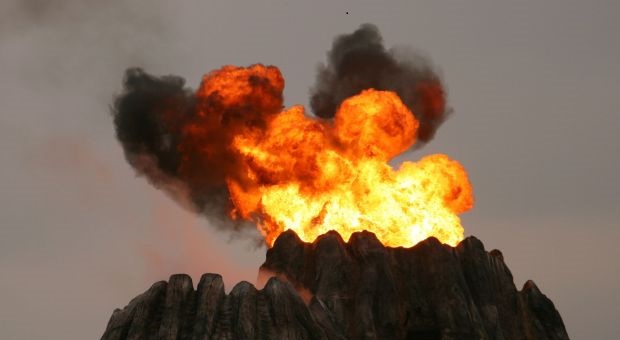
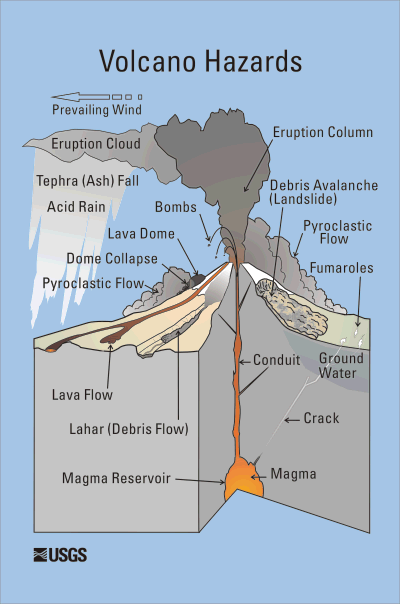

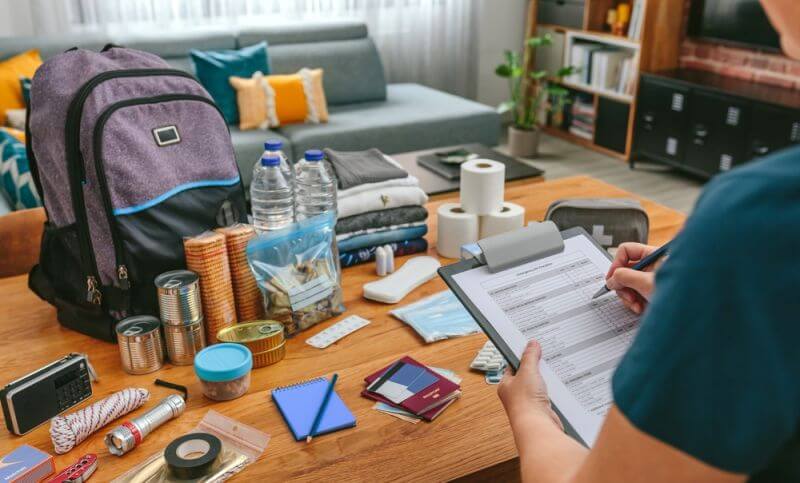

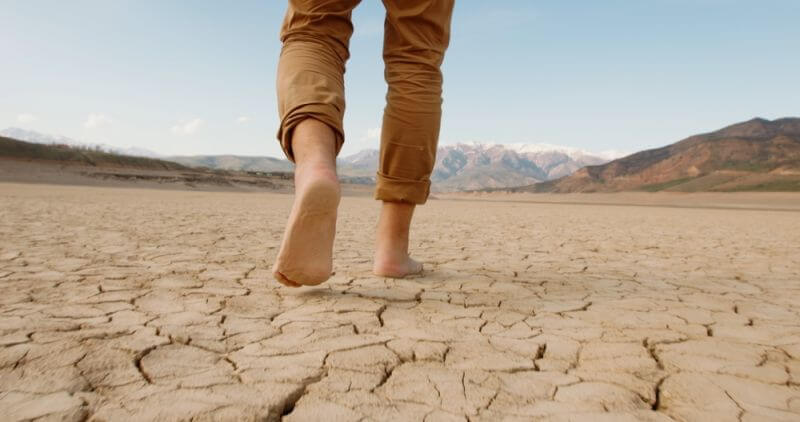
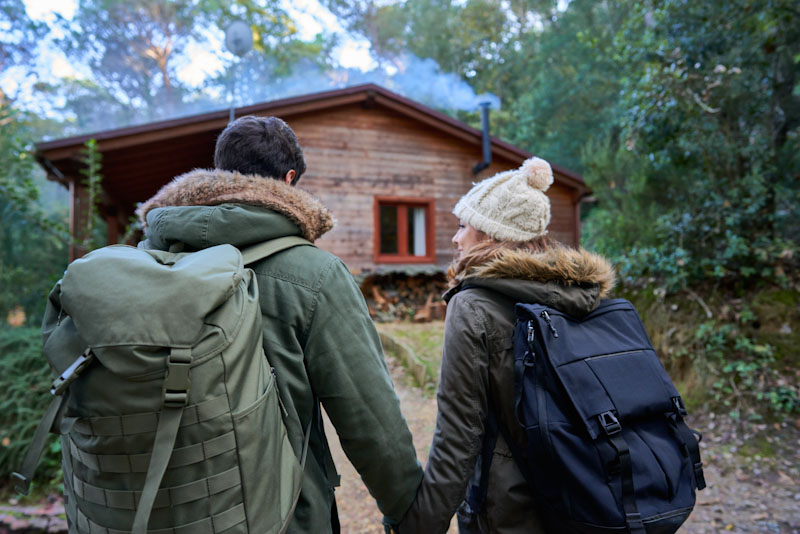

CHRISTIE WAGNER-STARLEY | June 11, 2018
|
This is the best, most thorough and most specific survival article I have ever read. And extra gratitude to you for including survival informatiin for our beloved animals!
Bob L. | June 11, 2018
|
Temporary “climate alteration” is a factor when there is a massive eruption and can cause hardship across the globe.
Two examples are the 1815 eruption of Mount Tambora that caused “the year (1816) without Summer. and the 1883
eruption of Krakatoa. Both of these volcanos are in the East Indies, but affected the climate of the entire Northern
Hemisphere, lowering average temps more than the doomsayers predictions of the affects of CO2..
Scientists have been closely watching the Yellowstone caldera recently due to increasing activity there. If this
super volcano awakens and in what manner, coal fired power plants and car emissions will become non-factors in
the climate change argument.
George | June 11, 2018
|
Thank you for bringing up the subject. I enjoyed your presentation , was good and informative , gives an informed point to start learning and preparing for a REAL possibility . I would like to share the point that researchers , have evidence that the heated chamber below yellow stone is not magma. Rather a super heated ( liquid ?? ) form of carbon. Maybe our author could shed a light on surviving an event of that form. George
TruthB Told | June 11, 2018
|
Jimmy Buffett said it best go to Jimmy Buffett-Volcano-YouTube
Scott Todd | June 11, 2018
|
Foxhole radios are pretty useless unless you’re actually near the station. If the nearest operating station is 100 miles away, even if they’re a 50kW powerhouse, you’d never hear it on one of those.